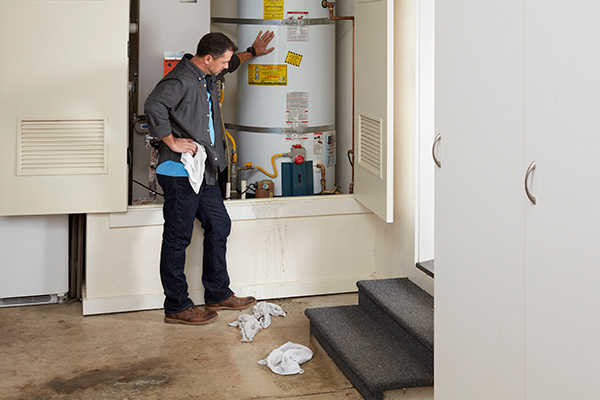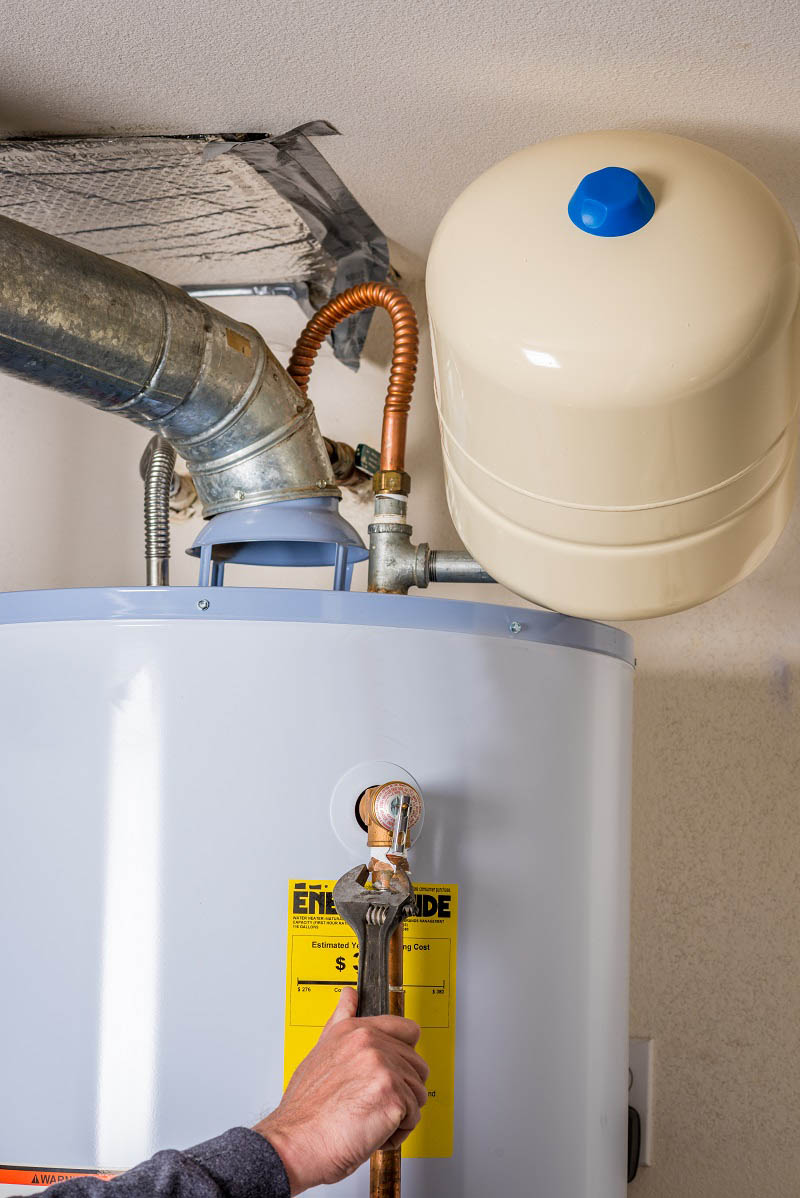Key Steps House Owners Should Follow While Handling Faulty Hot Water Systems
Key Steps House Owners Should Follow While Handling Faulty Hot Water Systems
Blog Article
What're your thoughts and feelings on Broken Water Heaters?

Whether it lies in the cellar or a different room, busted water heaters can cause anxiety. A common unit holds 80 gallons, so an over night leak will bring about a flood. This causes major building damage with soaked wall surfaces and floors. Besides, having no warm water supply is additionally problematic. If you are handling these problems, make note of the following:
Call the Plumber
After doing the initial 2 security steps, you should call your plumber to come right now to repair a fractured hot water heater. Nonetheless, remember that your unit will not just collapse considerably overnight. There are usually indications that your aging hot water heater has debris accumulation in the inside. Keep in mind of the following:
Don't wait for significant flooding to call the plumber. Already, you will certainly need to invest even more to restore your building. Rather, as quickly as you identify these signs, have a specialist concerned check your water heater tank. Commonly, hot water heater have a lifespan of concerning 8 to 12 years. With routine evaluation and also maintenance, you can lengthen its life.
Cut Off the Cold Water Supply
Cut off the containers faucet water supply from the source. This goes from your major water line right into the tank. When your storage tank remains in good condition, the cold water quits filling when the container is full. Since it is dripping, the water will certainly proceed to stream. Shut the shutoff discovered on top of the heating unit. Turn this clockwise to shut it off. If you can not discover it or reach it, you must switch off that primary supply of water line outside your residential or commercial property.
Turn Off Source Of Power
Prior to calling the plumber, turned off a gas hot water heater by turning the temperature level dial. This is generally located on top of the thermostat. If you have a version that runs on electric power, turn off the breaker. This will stop electrocution, specifically if there is a leakage as water is a conductor. Generally, the heating element turns off when the water hits a certain temperature level. With a busted tank, it might malfunction. Cutting it off ensures you stay secure.
Clean Up Property
After calling the plumber, document damages by making note as well as photos so you can declare your house owner's insurance coverage. From there, start the immediate cleaning. Secure any crucial belongings to avoid additional saturating. Get rid of any kind of standing water to protect against mold and mildew and also mold development. If you have a completely submersible water pump, make use of that to drain pipes the water. Or else, the traditional container method will additionally function. Try to mop out every little thing, consisting of walls and baseboards. Maintain them running to maintain air flowing if you have an electrical fan as well as dehumidifier. This will certainly assist deter mold and mildew growth.
Bear in mind, if you observe any concerns with your water heater, call the pros right now. You can not take this trouble gently because a malfunctioning thermostat can elevate water temp to a hazardously high degree, bring about unexpected burns. A broken heating system stress safety valve can also cause an explosion. For finest results, get a yearly check so your system gets evaluated, cleansed, drained, and refilled, ensuring ideal efficiency.
After doing the very first two security actions, you must call your plumber to come right away to repair a burst water heating system. Rather, as soon as you find these signs, have a specialist come to inspect your water heating system storage tank. Prior to calling the plumber, shut off a gas water heating unit by turning the temperature level dial. If you have a submersible water pump, use that to drain pipes the water. Bear in mind, if you see any kind of concerns with your water heating system, call the pros right away.
8 REASONS YOUR HOT WATER HEATER IS NOT WORKING & HOW TO FIX
Water Heater Problems & Solutions
Loose or Damaged In-Line Valve
Unlike a water leak near the bottom of your water tank, a water leak on top of your system can be easily fixed. A common cause of water tank leaks includes a loose in-line valve. This is a handle that is located at the top of the water tank that is engineered to activate or deactivate the flow of water. To fix this problem, you will need to secure the nut that holds the ball or in-line valve in its location. If the leak becomes more severe once it is tightened, you will be required to travel to your local hardware store to purchase a new in-line valve for your water heater.
Damaged Pressure Relief Valve
Most types of water heaters are equipped with a pressure relief valve that is engineered to discharge pressure from the water tank when it becomes too high. If this valve on top of your water heater begins to leak, we recommend purchasing a new one online or from your local store. The process of removing and replacing pressure relief valves is not complicated.
No Warm Water
If you have an electric water heater in your home, the most typical cause of a lack of warm water is a broken heating element. Your water heater is equipped with two heating elements that are tasked with heating incoming water in the water tank. Once a heating element begins to malfunction, you will have little to no hot water to use for showering, cleaning, and laundry.
Low Supply of Hot Water
Are you continuously running out of warm water? This issue may be a byproduct of a cracked dip tube. This tube is engineered to push cold water to the base of your water tank to be heated. Once a crack or hole begins to form in the dip tube, the incoming supply of cold water may be released near the top or middle of your tank. As a result, the cold water on top of the tank will be sent to the faucets and showers in your house. This hot water heater problem can only be fixed by replacing the dip tube on your system. Since the process of installing a new dip tube is complex, we recommend calling a certified technician for help.
A low supply of warm water may also be a signal of excess sediment buildup in your water tank. As your water heater reaches the middle of its life cycle, minerals in water including magnesium and calcium will begin to collect at the base of the water tank. As the minerals continue to grow, there will be less room in the water tank to store hot water. To resolve this problem, flush your water heater to remove the excess minerals.
Water is Too Warm or Cold
If the water in your shower feels uncomfortable hot or cold, you can adjust the temperature of your water by changing the settings on your thermostat. Setting the temperature to 120 degrees Fahrenheit may help you save money on your utility bills. This is an excellent temperature to use if you’re worried about scalding or skin irritation. Does this temperature feel too cold? You may also adjust the thermostat to 140 degrees Fahrenheit to make your showers more pleasant. If your hot water heater is not working when you change the temperature, this is an indicator of a broken thermostat. Immediately find a certified plumbing or heating contractor in your area to repair or replace your thermostat.
Low Water Pressure
Low water pressure is not always caused by a malfunctioning water heater. If you live in an older home with smaller water pipes, the flow of water will be restricted prior to reaching our kitchen or bathroom skins. The only way to eliminate this hot water heater problem is to connect new ¾-inch water lines to your system. Another type of problem that may negatively impact your water pressure includes calcium deposits in water pipes.
As magnesium and calcium begin to form in your pipes, the diameter of your water lines will become smaller. As a result, the warm water from your water heater will not be able to travel in an efficient manner to your sinks or appliances. Since the process of replacing water pipes includes removing drywall, an average homeowner that does not have a plumbing license will not be able to fix this hot water heater problem.
https://www.wmhendersoninc.com/blog/8-reasons-your-water-heater-is-not-working-how-to-fix/

I ran across that post about Broken Water Heaters when doing a search on the web. Be sure to set aside a second to distribute this write-up if you enjoyed reading it. I appreciate reading our article about Maintaining & Draining a Water Heater.
Fast service, dial quick! Report this page